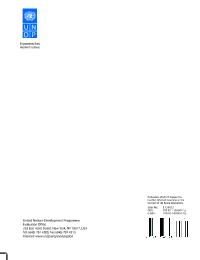
Evaluation of UNDP Support to Conflict-Affected Countries i the Context of UN Peace Operations
Completedon 31 Jan, 2013
Evaluation Plan
Planned End Date
Jan 2013
Evaluation Type
Thematic
Management Response
Yes
Evaluation Budget
$250,000
Summary
This evaluation focuses on the evolving and expanding role of the United Nations Development Programme in conflict-affected settings, particularly in situations where UNDP is engaged during and immediately after an integrated United Nations peace operation. The evaluation considers a broad set of UNDP programme activities globally, incorporating findings from country case studies, interviews and documents. The evaluation includes findings and conclusions covering UNDP polices, programmes and operational aspects in conflict settings and provides recommendations for improvement. The UNDP management response is included as an annex to the evaluation report.
Evaluation Title
Evaluation of UNDP Support to Conflict-Affected Countries i the Context of UN Peace Operations
Plan Period
Status
Completed
Type
Thematic
Plan Date
1 Jan, 2013
Completion Date
31 Jan, 2013
Budget
$250,000
Expenditure
$0
Management Response
Yes
Quality Assessment
No
Joint Programme
No
Joint Evaluation
No
GEF Evaluation
No
Countries
Independent Evaluation Office
Plan Period
Status
Completed
Type
Thematic
Management Response
Yes
Plan Date
1 Jan, 2013
Quality Assessment
No
Completion Date
31 Jan, 2013
Joint Programme
No
Joint Evaluation
No
Budget
$250,000
GEF Evaluation
No
Expenditure
$0
Countries
Independent Evaluation Office


